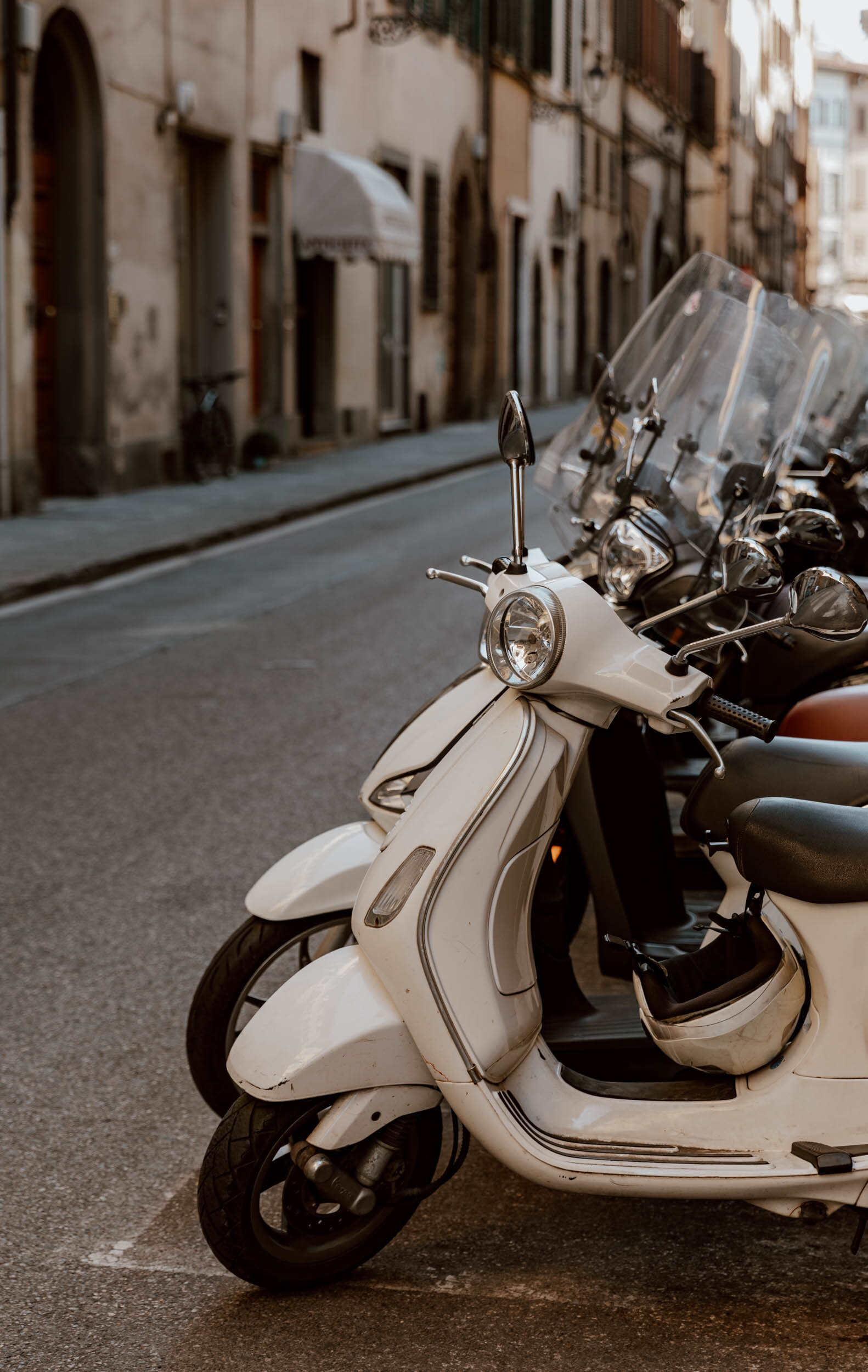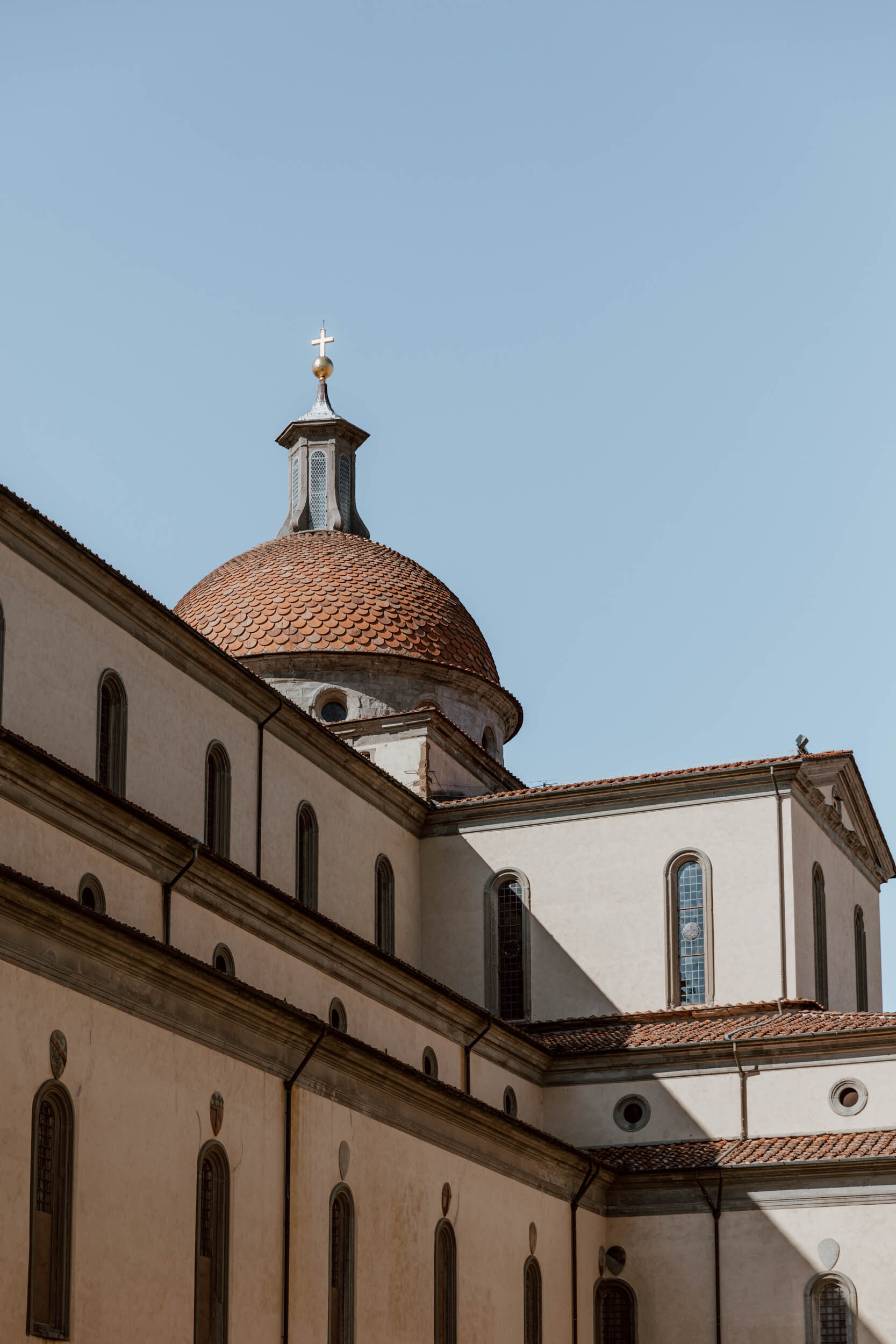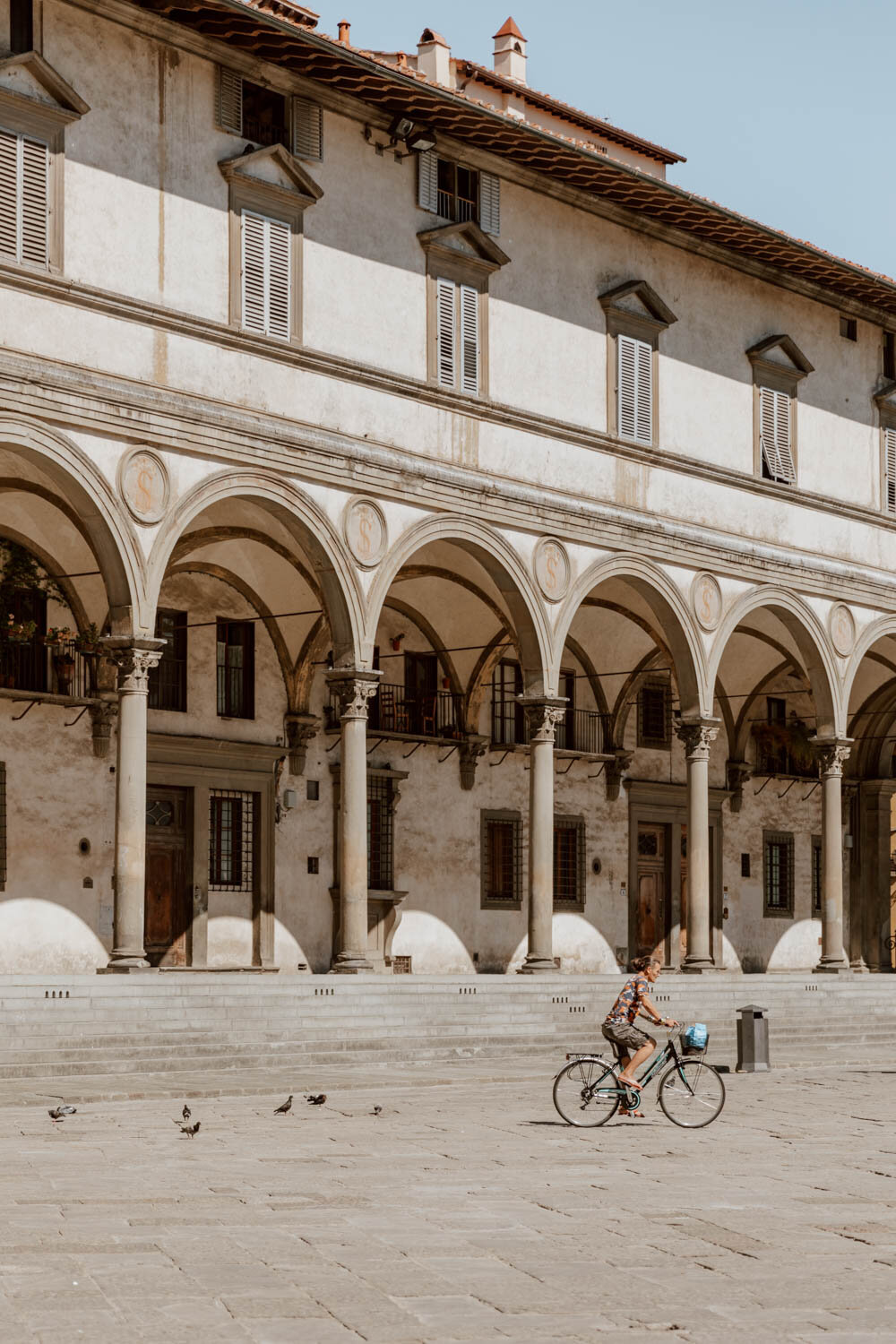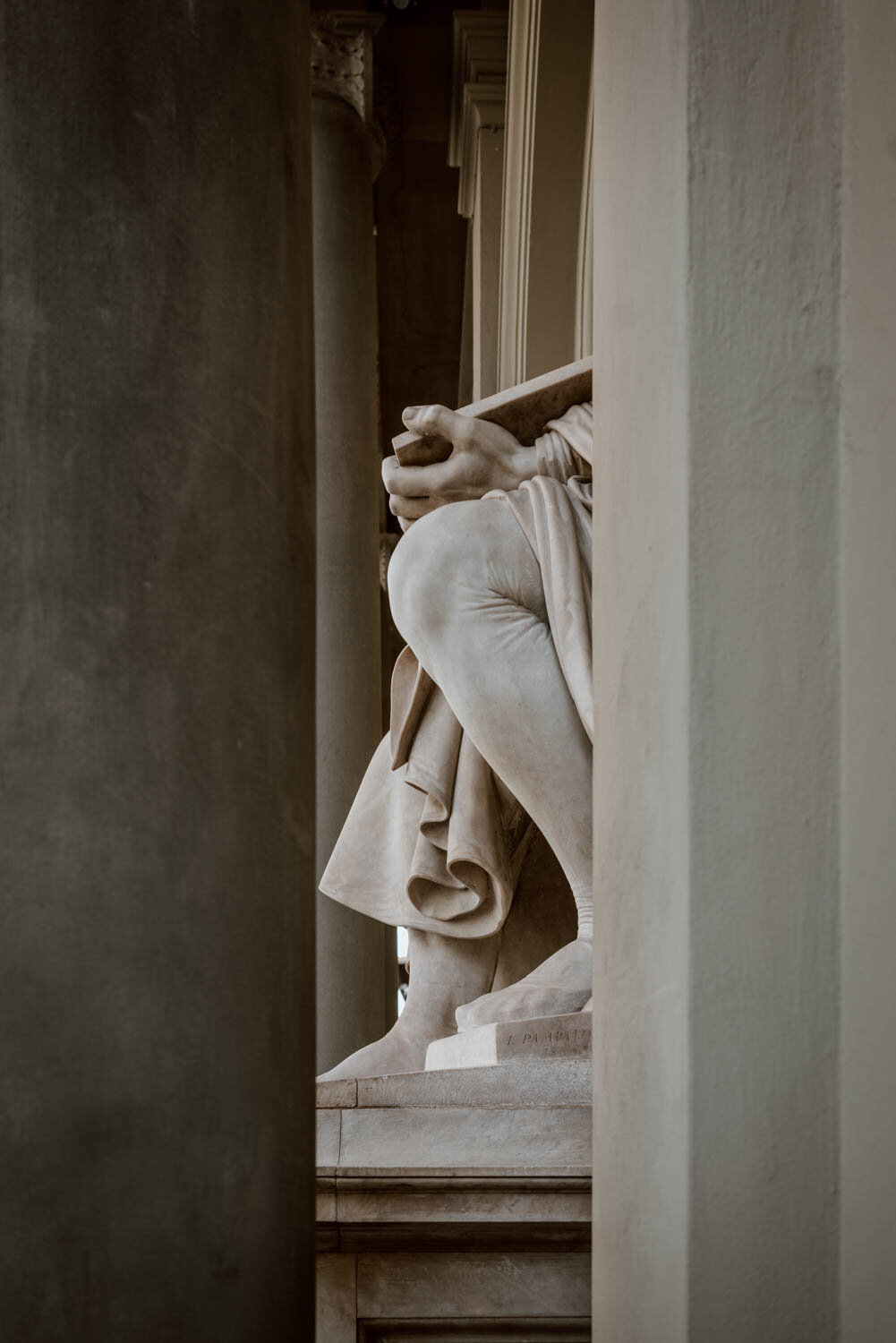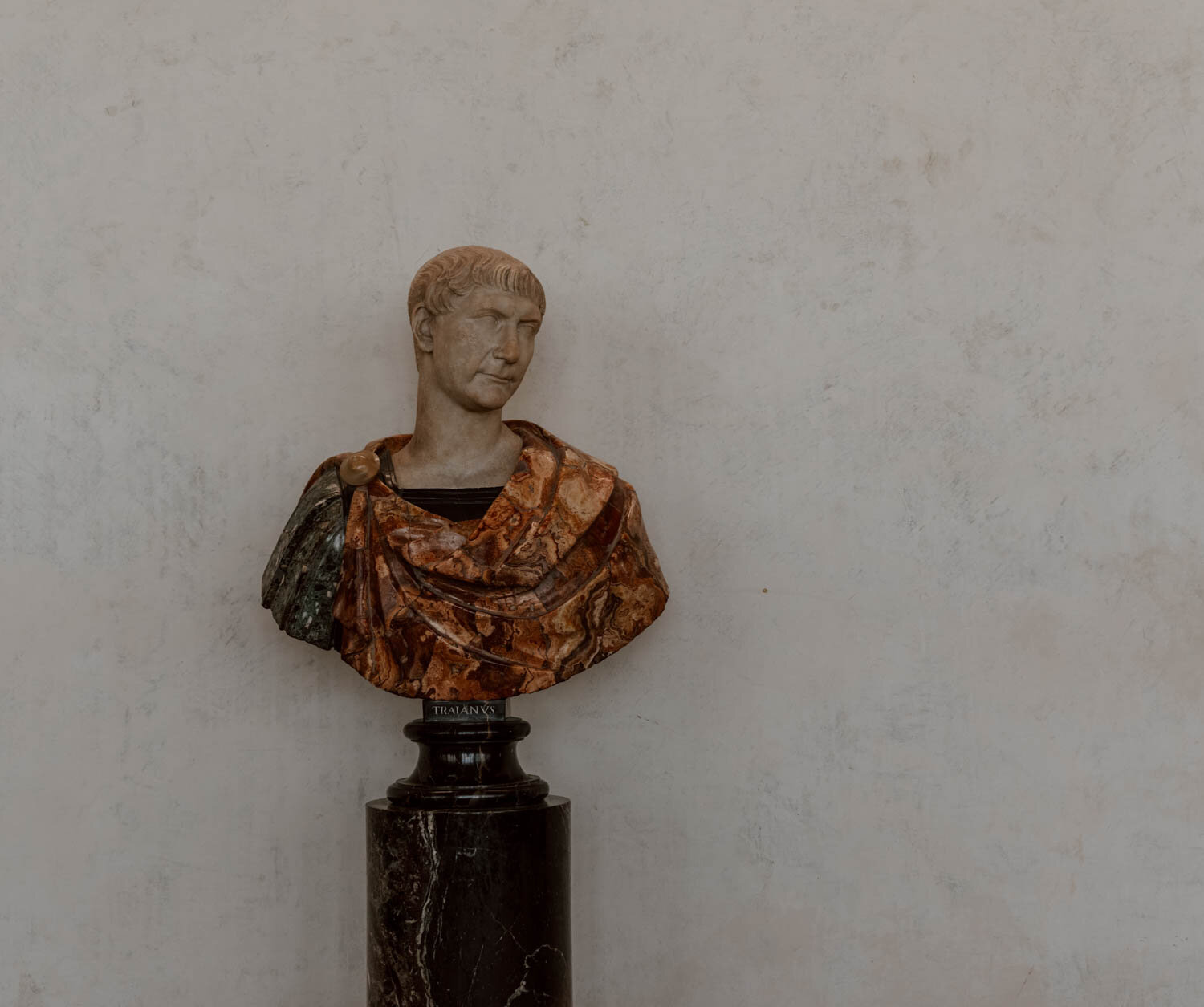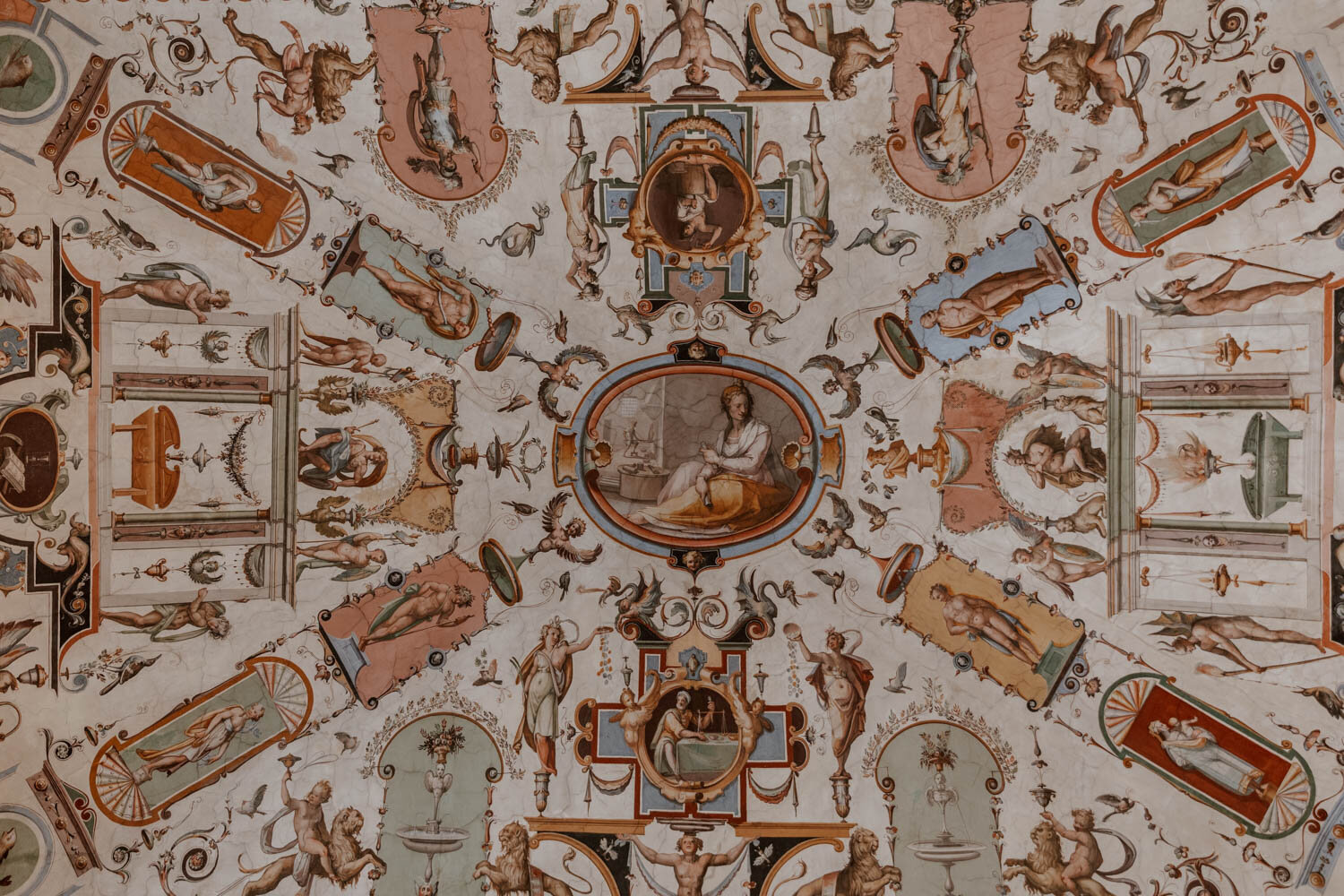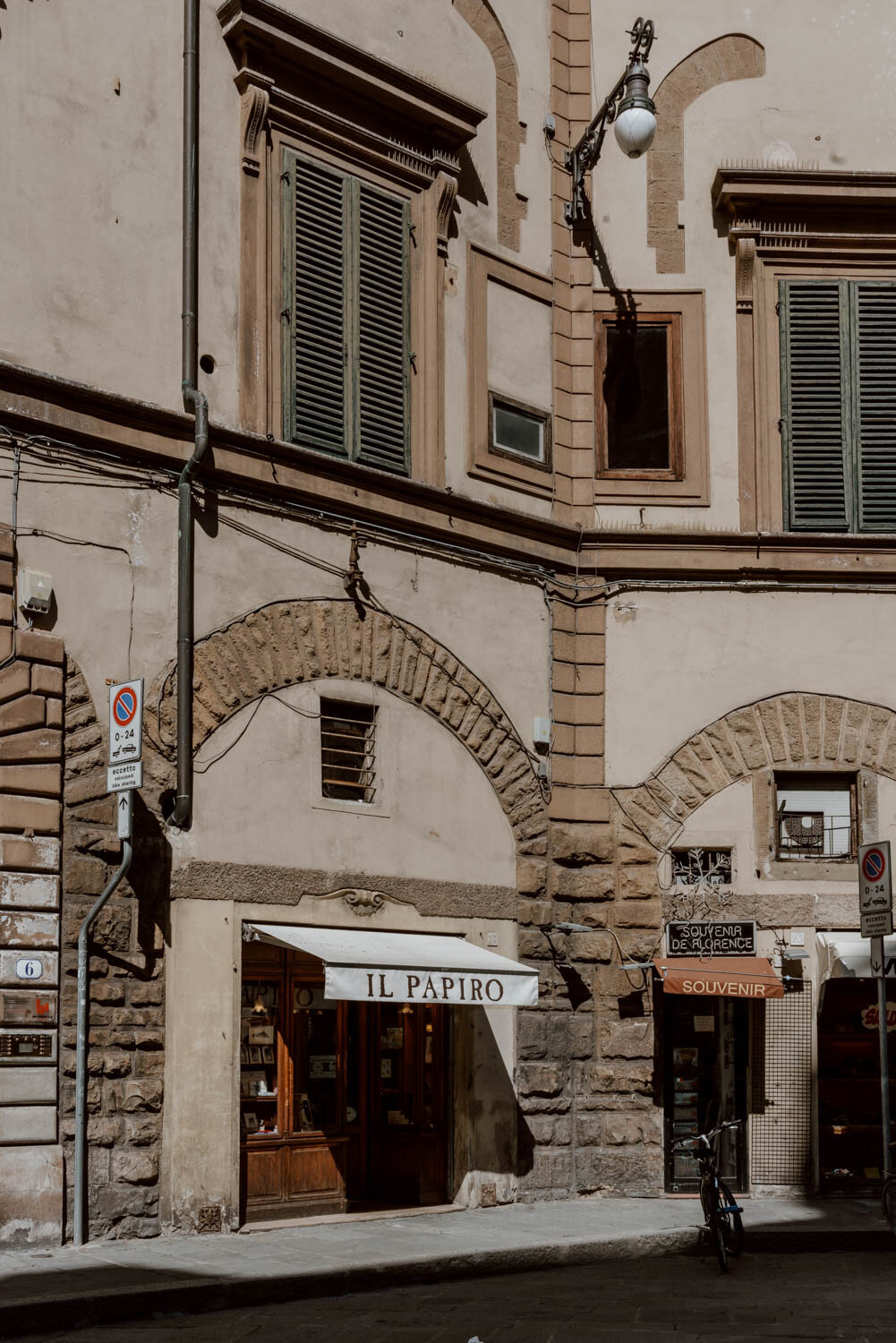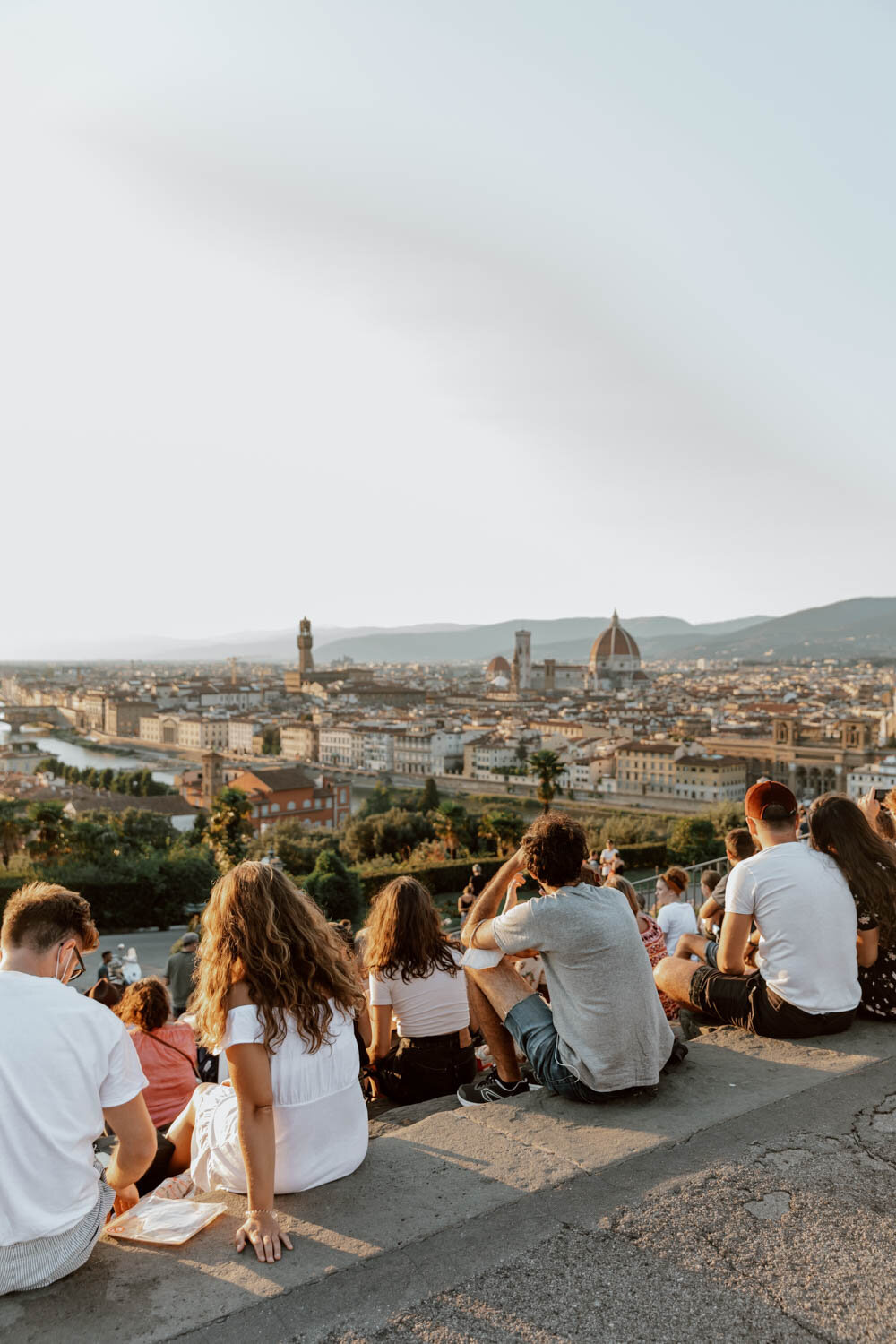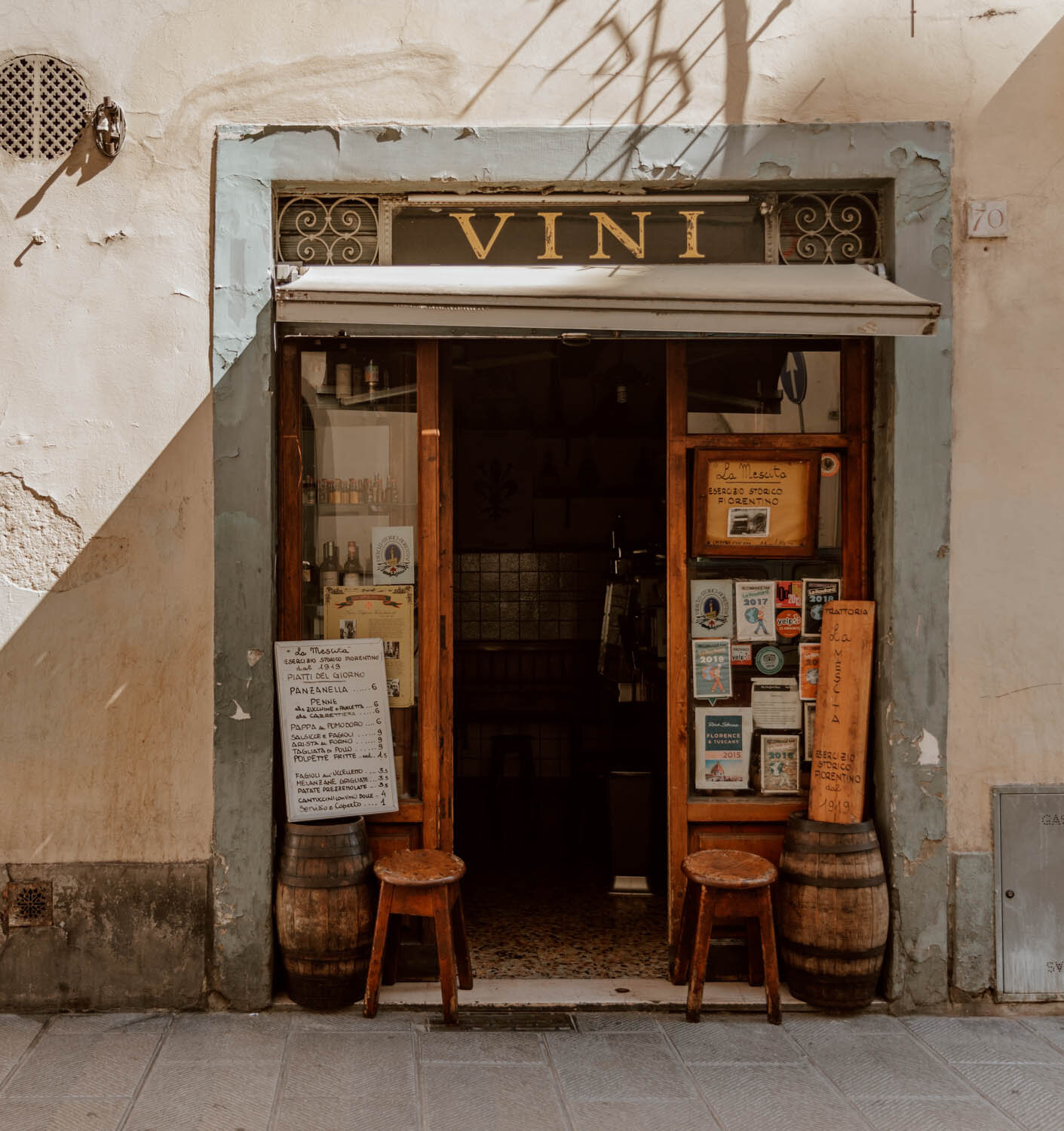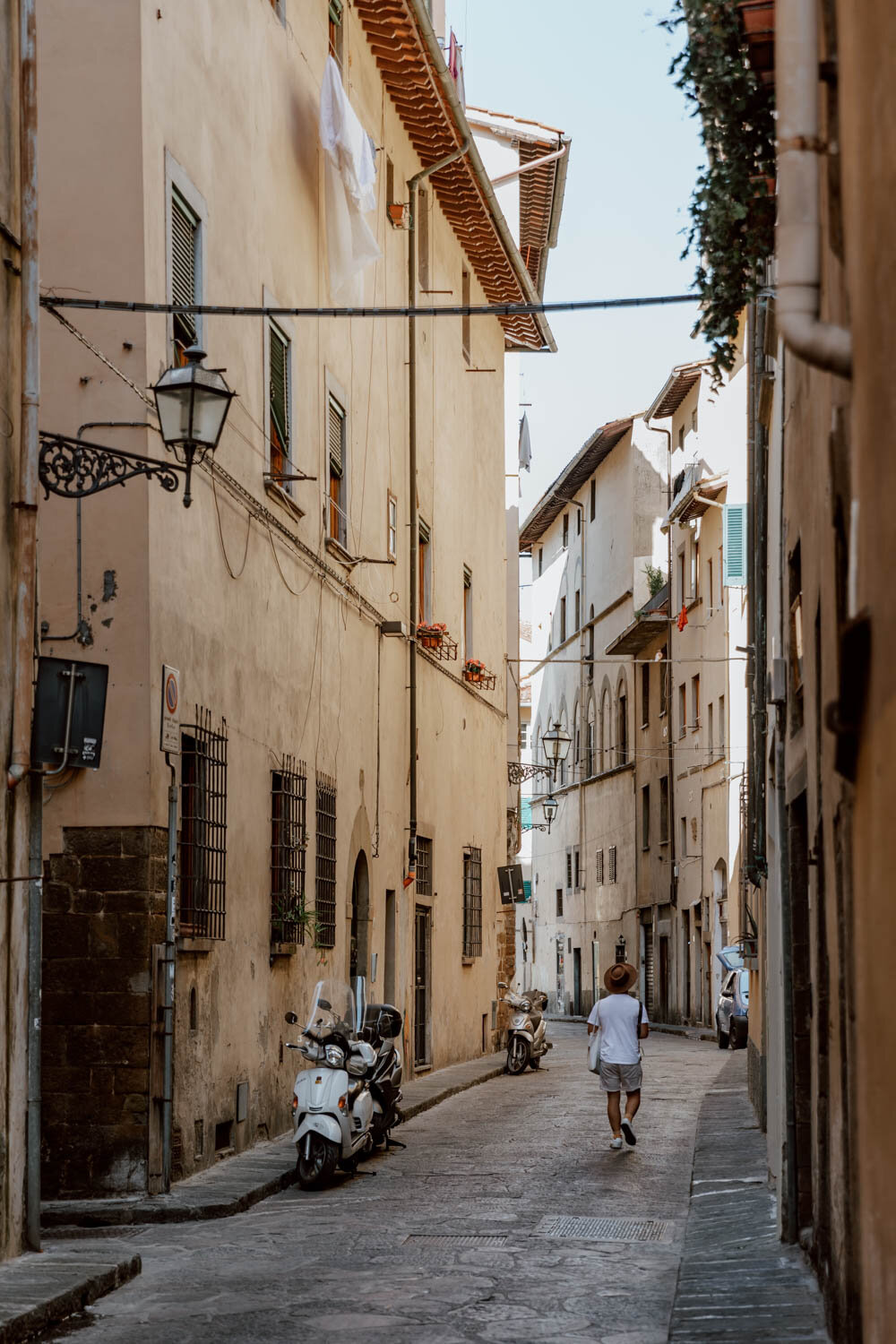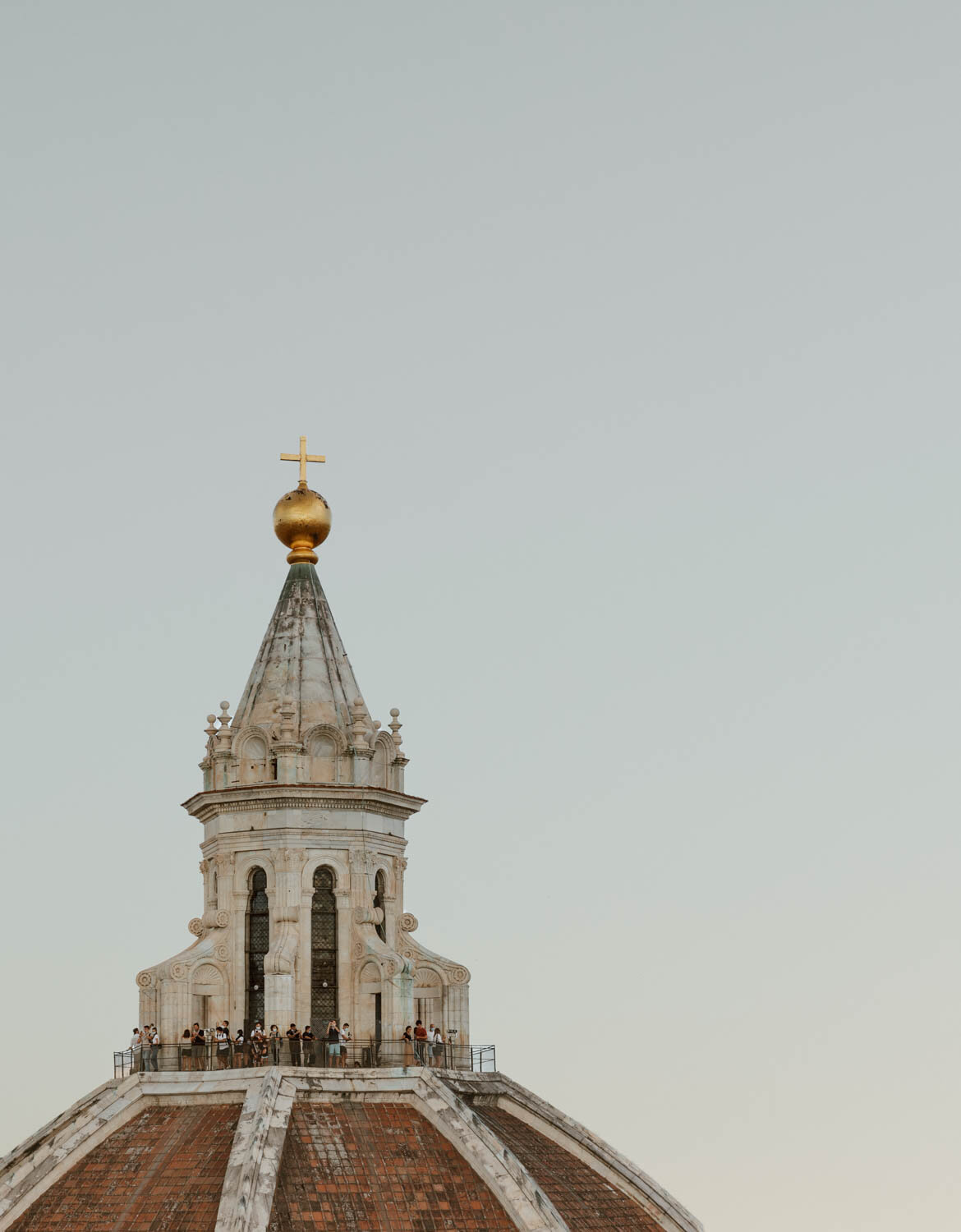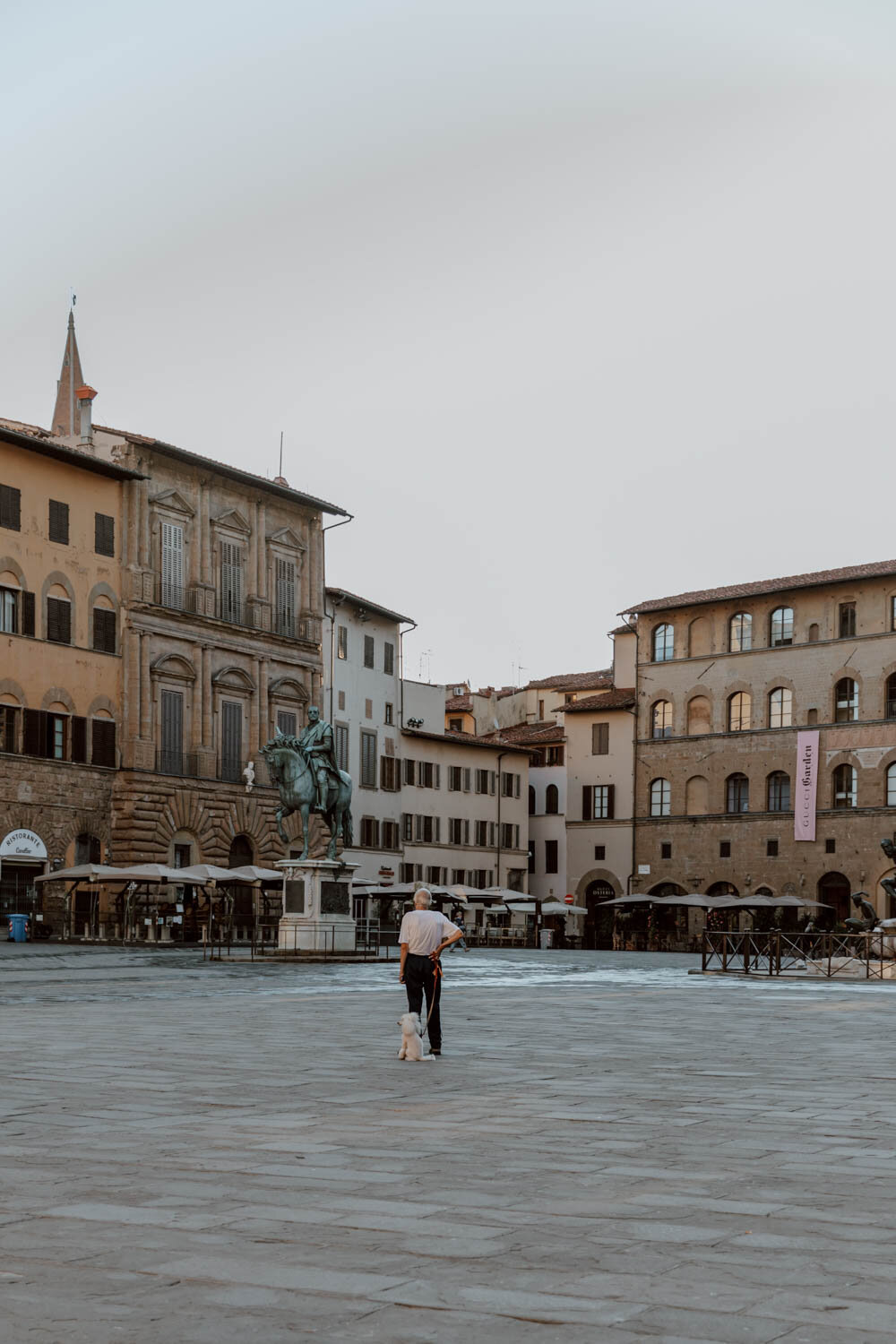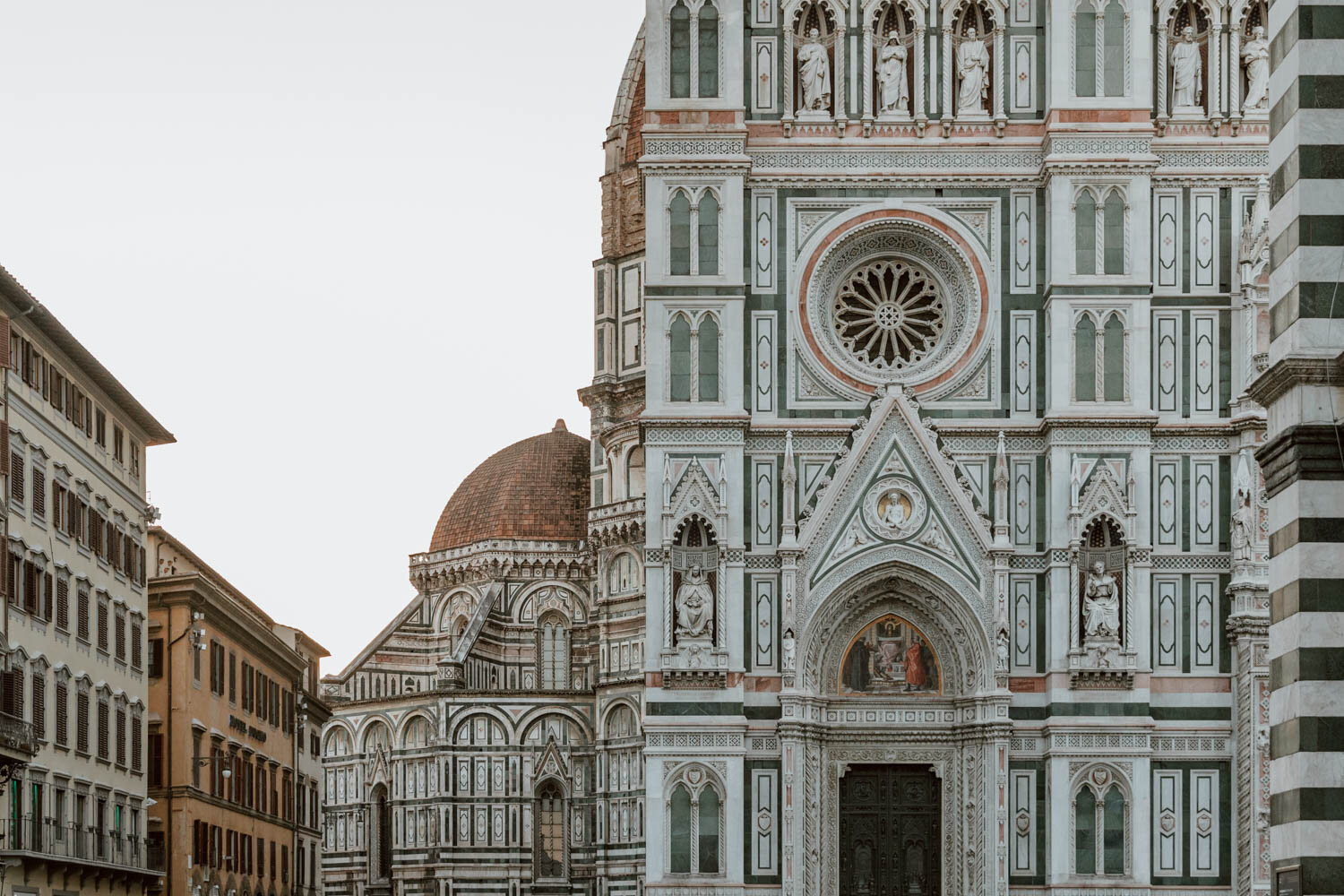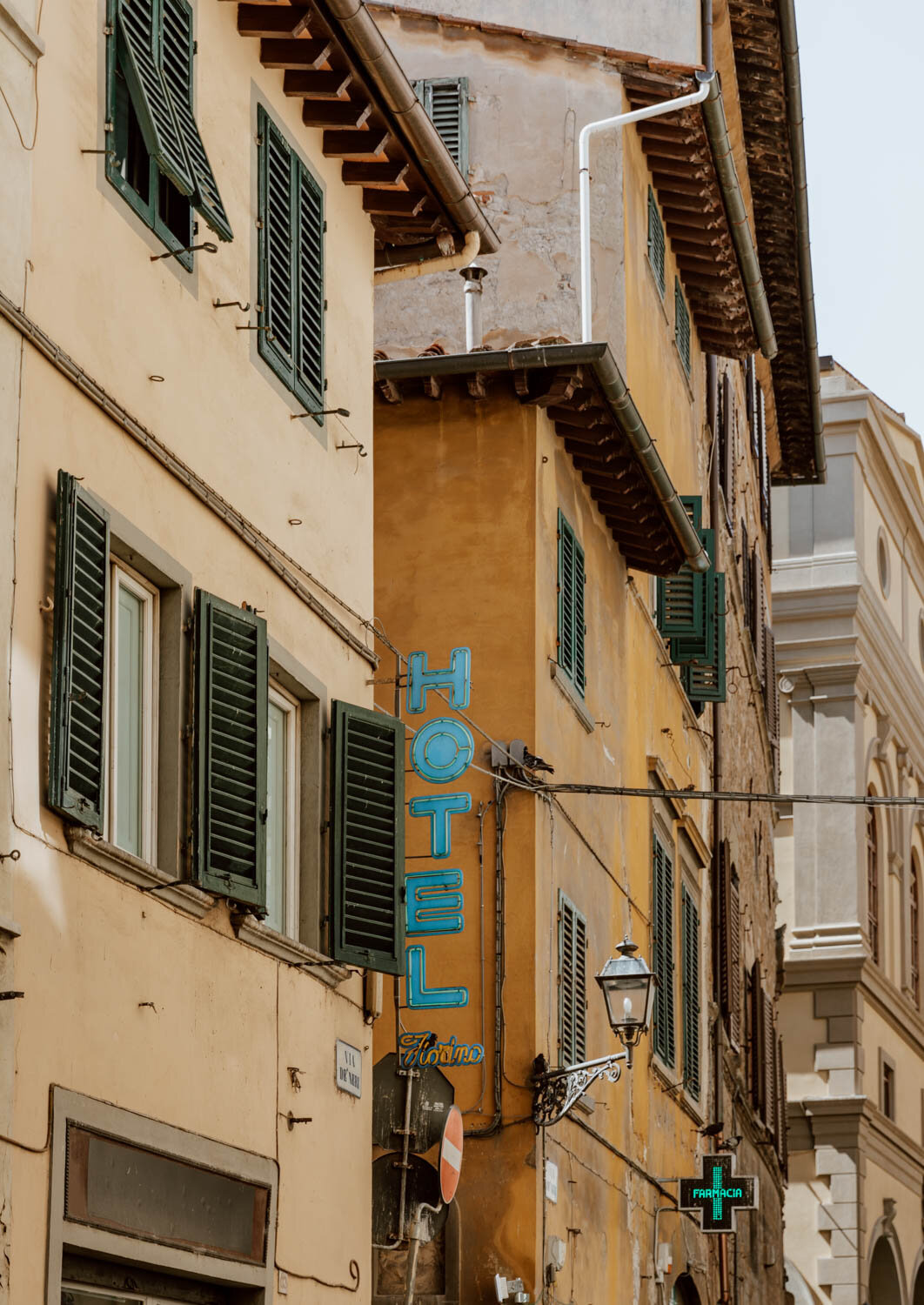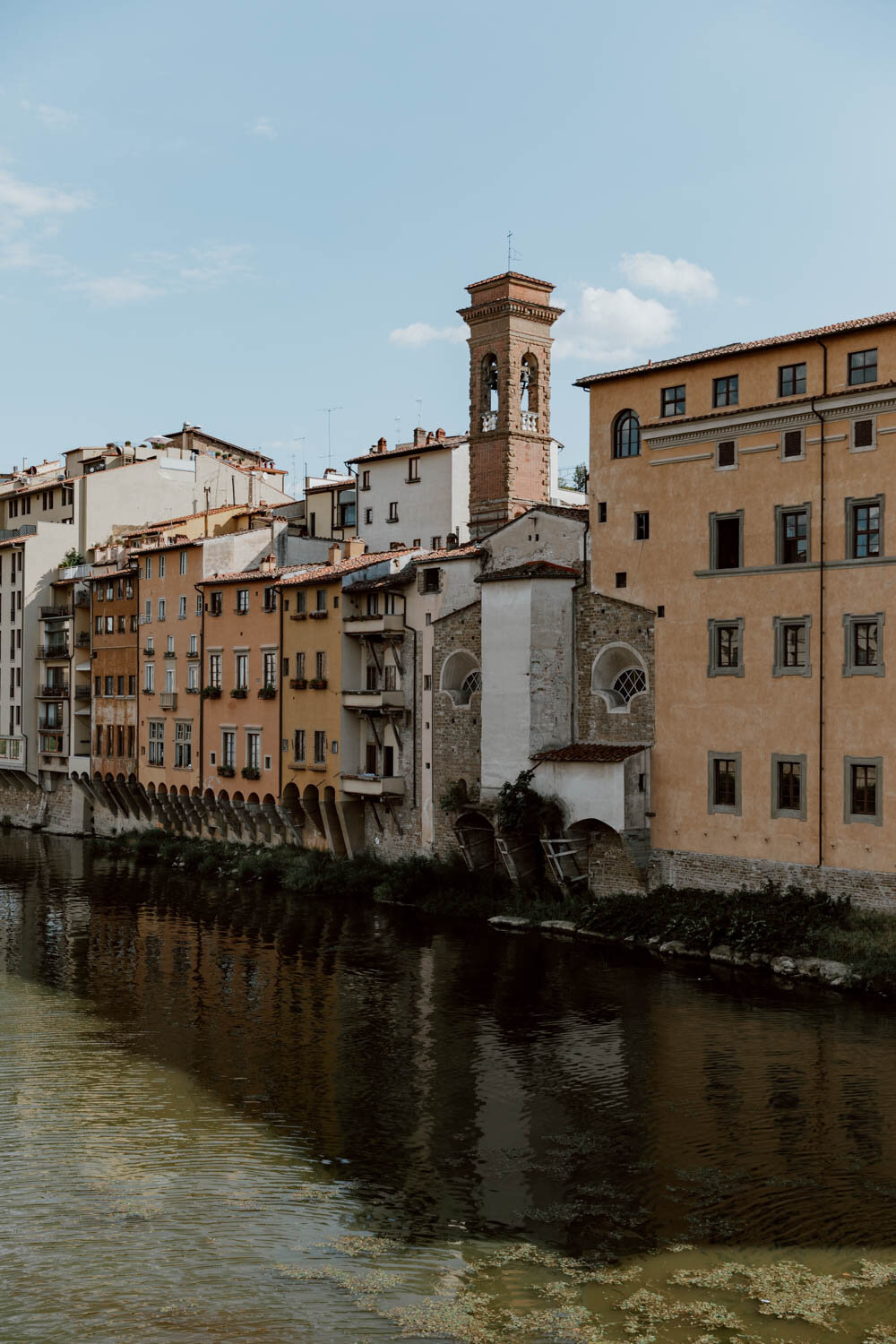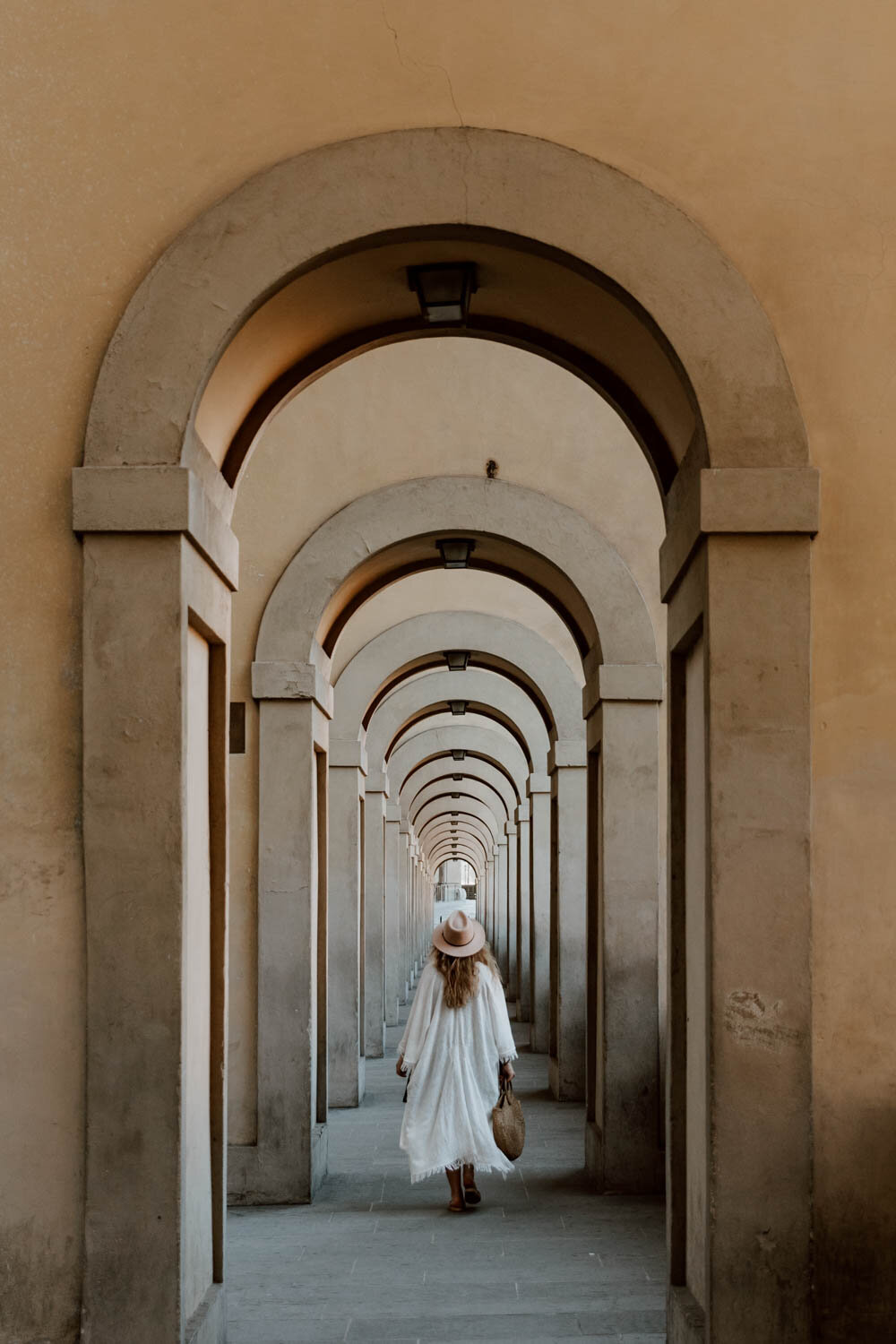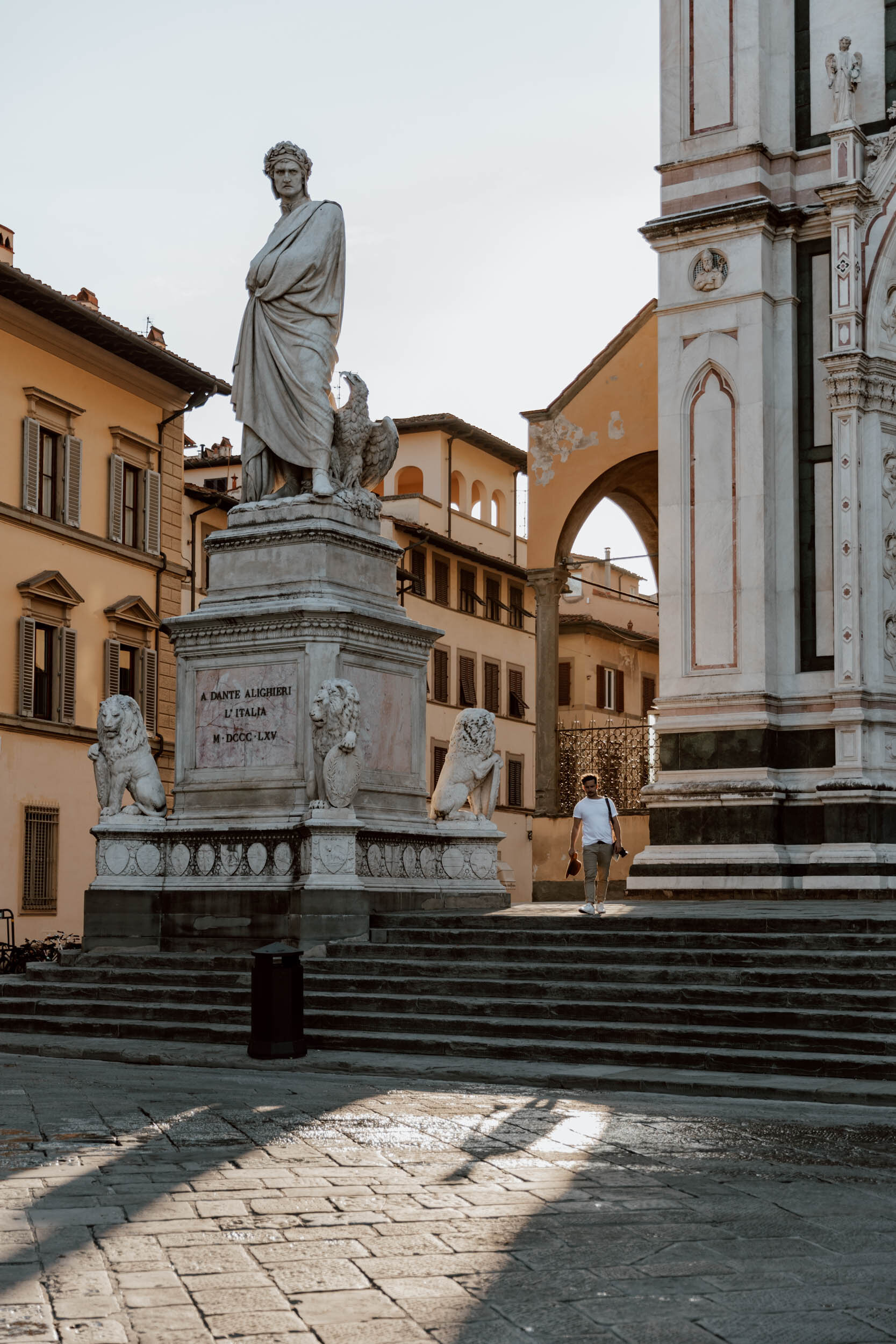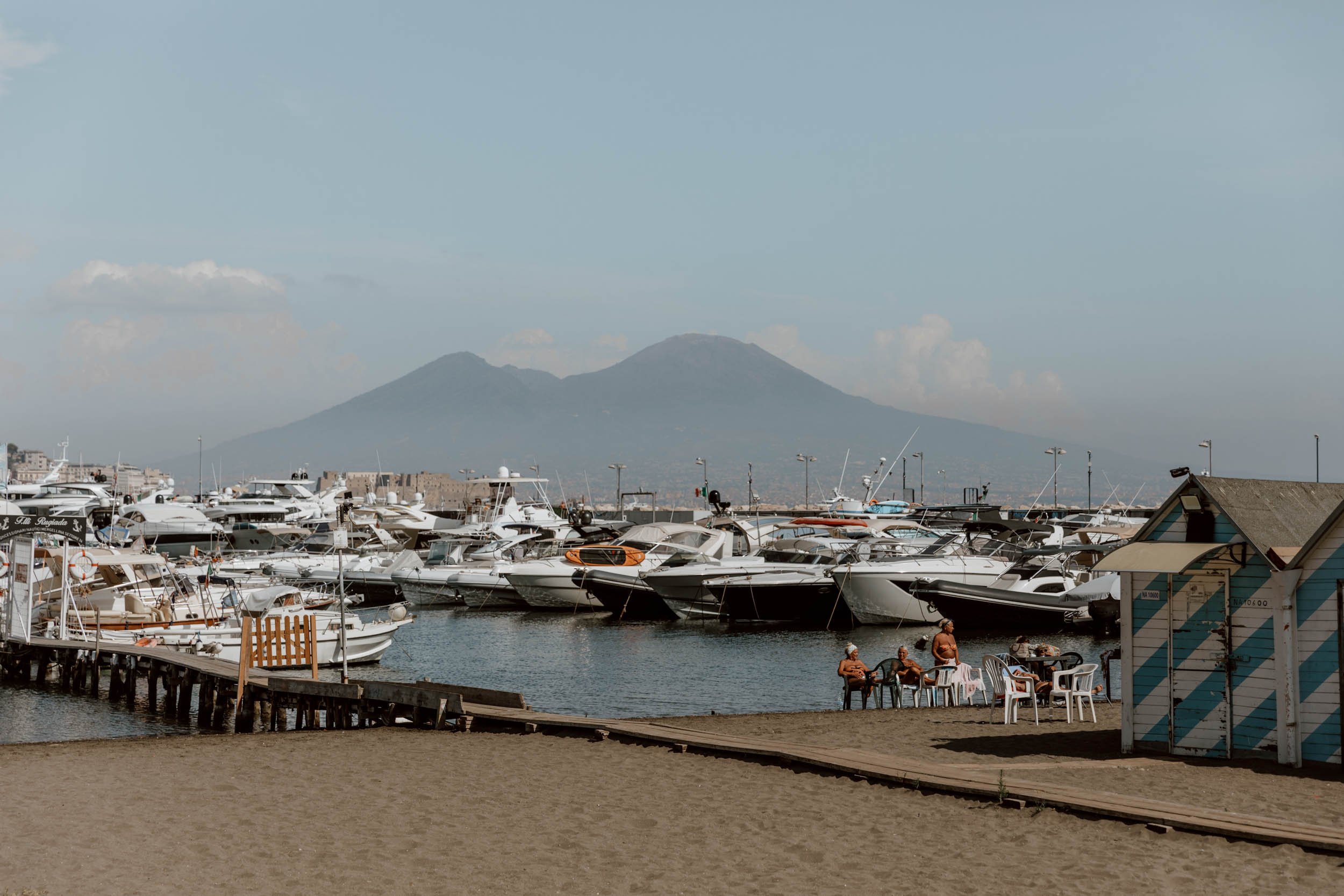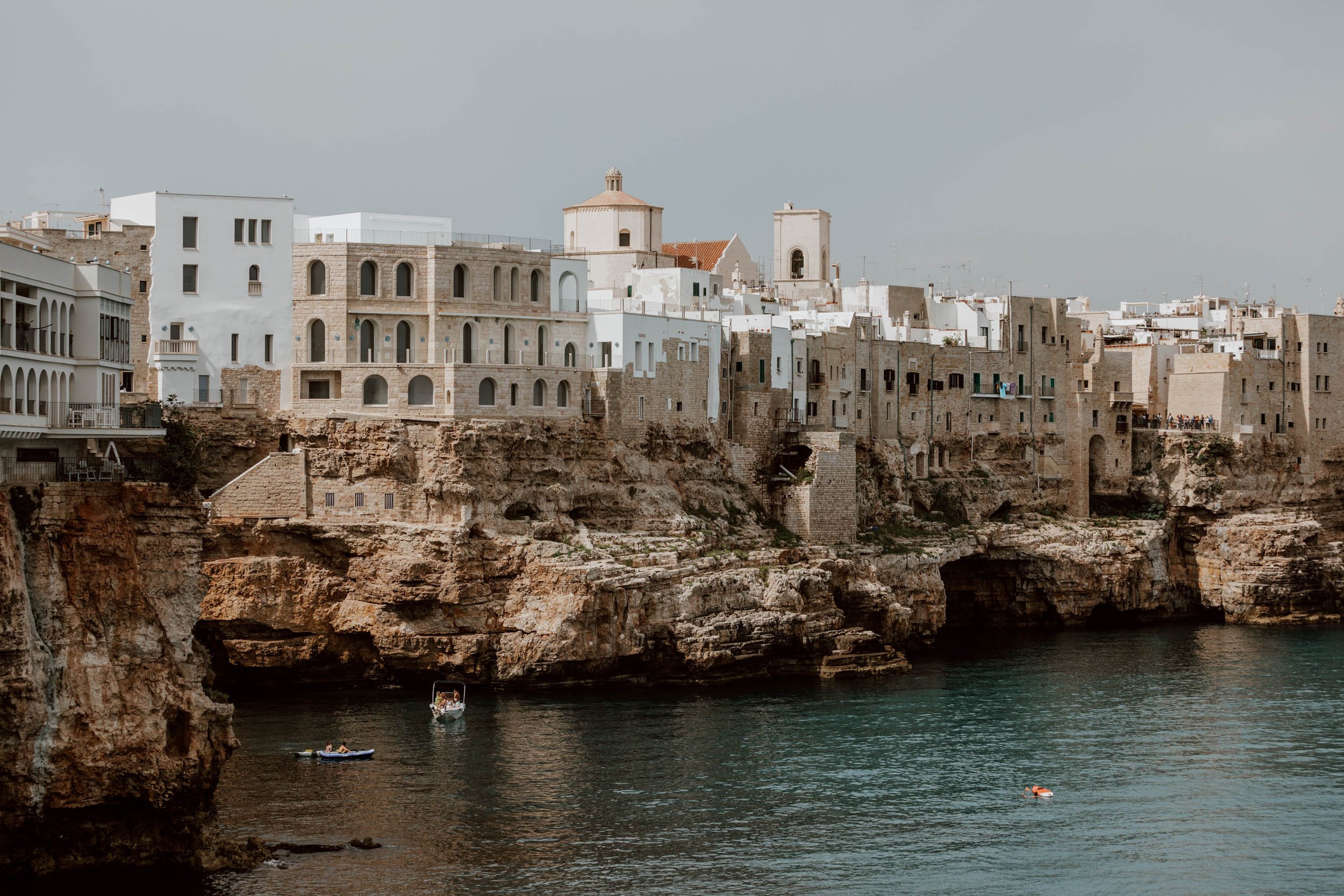Visiting Florence is one the top of many an Italy bucket list. If you’re planning your first visit here, this guide is full of useful tips to plan the perfect trip!
We’ve curated all the inspiration, ideas, and personal recommendations you need to create an unforgettable experience in the capital of Tuscany in our guide, 13 Wonderful Things to do in Florence.
We’ve also shared the essentials on buying your ticket to see Michelangelo’s David in this article.
In this post however, we wanted to share useful advice on the practical side of preparing for your time in Florence. Whether visiting for a couple days or a week, these personal tips on where to stay, tickets, transport, and avoiding the worst of the queues, will help you get ready, save time, and ensure a travel better experience.
Here are 18 things to know before you visit Florence.
It’s Not Florence in Italian
Ok, easy one to start with.
In Italian, the city of Florence is called ‘Firenze’.
If you’re booking trains or looking for accommodation or airports, it’s usually going to refer to ‘Firenze’ rather than the beautiful English exonym of Florence!
Quick note on pronunciation too - it’s a soft ‘say’ at the end, not a harsh ‘zay’ or ‘ze’ sound.
How To Get To Florence By Train
If you’re already in Italy, then taking the train to Firenze Santa Maria Novella (Google Maps) - the main train station in the city - is the most convenient and sustainable option. Note that the station is sometimes shortened to ‘Firenze SMN’.
Typical train times / costs from the following popular destinations are:
Pisa / 1 hour / €8
Milan / 2 hours / €50
Venice / 2.5 hours / €45
Rome / 1.5 - 3.5 hours / €25-40
Cinque Terre / 3 hours / €15
From Santa Maria Novella station, you’re a short walk from the the main attractions and accommodation districts of Florence’s north bank.
If your accommodation is close by, it’s feasible to walk to it. However, if you’re more than 5-10 minutes away with a bit of luggage, or based on the other side of the river Arno like we were, then it’s best to take a taxi or hop on one of the regular public buses (more on those later) which depart from this area in front of the station entrance.
There are two other trains stations in Florence - Rifredi to the north and Campo di Marte Station to the east - but you shouldn’t have any need to get off at or depart from these.
To book train tickets in advance, check out TrenItalia or Italiarail. If it’s your first time in Italy, we’ve shared lots more advice in this article: A Beginner’s Guide to Train Travel in Italy.
How To Get To Florence By Plane
Florence’s airport - confusingly known by the triumviate of Peretola (FLR), Aeroporto di Firenze-Peretola, AND Amerigo Vespucci Airport - is surprisingly small. Due to this, it only serves a limited number of domestic and international connections, which is why you may be finding few options for flying there at a reasonable price.
This where Pisa International Airport comes into the equation.
If you plan on starting your Italian adventure in Florence, then you are much more likely to find better value flights and more connections if you fly direct to Pisa (also called Galileo Galilei Airport).
From there, it’s a simple and affordable one-hour train or shuttle bus journey to Florence. Find out more here.
If you do fly into Florence airport, then you have three options to reach the city centre:
1. The tram service is the cheapest and most convenient, running from 5 am to midnight (Sunday to Thursday) and until 1.30 am on Fridays and Saturdays. Departure are around every six minutes, tickets cost €1.50, and it takes 20 minutes to arrive at the train station in Florence. Buy tickets from the machines before you board.
2. The Volainbus shuttle service picks up outside arrivals. With departures every 30 minutes, 7 days a week, it will take you to Florence’s BUSITALIA Bus Station (Google Maps) in 20 - 25 minutes. A one-way ticket costs €6, and you can purchase at the airport and on board. From the bus station, you're a two minute walk from Santa Maria Novella train station.
3. With an official airport taxi it's a fixed fee from the airport to downtown Florence: €22 during the day, €25 from 10 pm - 6 am, and €24 on national holidays. There's also a supplement of €1 per piece of luggage, something which is quite a standard charge from Italian taxis. Travel time is 15-20 minutes.
Keep Reading // If you do choose to fly into Pisa, why not have a night or two there first? Check out our guide to the Leaning Tower, and then find discover the other best things to do in Pisa!
The Best Time To Visit Florence
We spent a full week here in September, which is also our favourite time of year to visit Italy: the crowds and unbearably high temperatures of a northern Italian July and August (33+ degrees) are gone, but it still feels very much like summer.
If you’re in the planning phase right now and have flexibility, we’d recommend early spring (April - May) or late summer /early autumn(September - October) as the best time to visit Florence. This city will always have a certain level of tourism, but those months will see it at its most pleasant.
In late June, July, and August - the peak months of school holidays and tourism in Europe - expect high numbers of tourists, longer waiting times, and higher prices on accommodation. This shouldn’t put you off visiting Florence in summer, but it’s good to know in advance.
With so many of its treasures being behind closed doors in museums and galleries winter visits are absolutely possible. The weather and different atmosphere may not make it as appealing though.
It’s The Home of David…
This is a city of countless masterpieces, but the majority of people only have eyes for one man.
Michelangelo’s David, the towering statue of the boy giant-slayer, is one of the most well known and famous sculptures in the world. After our own experience alone with him on one late summer morning, we’re happy to share that he is worth every single bit of praise that’s been showered upon him in the last five centuries.
Florence actually has three Davids: the original in Galleria dell’Accademia, a bronzed replica in Piazzale Michelangelo, and a further replica in his original standing place in front of Palazzo Vecchio. All three will be seen or passed as your explore Florence - but make sure you give yourself time to truly get to know the original.
Tickets are often sold out weeks in advance, so you do need to plan ahead unless you fancy an uncertain three-hour wait in a queue. Don’t panic though, as there are a couple of ways to get last-minute tickets when the official website no longer has availability.
We’ve provided all the key information and advice in this post: How To Buy Galleria dell’Accademia Tickets
Read Later | A Moment With Michelangelo’s David
…And The Birthplace of the Renaissance
Bankrolled by the ruling Medici family from the 15th century, the humanities flourished, artists like Raphael, da Vinci, Botticieli and Michelangelo innovated, and Florence became the cultural capital of the continent. For many, it was the ‘New Athens’.
We’ve explained this in more detail in our 13 Wonderful Things to do in Florence article, but understanding Florence’s pivotal role in the great movement in artistic, scientific, architectural and cultural thought in post-Medieval Europe and pre-unification Italy is essential to experiencing the city in the best way possible.
Art is intrinsic to the rise of Florence, and devoting a certain amount of time and curiosity to standing face-to-face with masterpieces beyond David is an important part of every Florentine itinerary.
That doesn’t mean every single hour has to be spent with Roman statues or Renaissance masterpieces - and it’s really important to appreciate in advance that there is such a thing as ‘too much of a good thing’. Our natural limit for any gallery - no matter what’s on show - is three hours, and it’s always better to spend 15-minutes becoming besotted with one masterpiece in detail, than ticking off 15 in as many minutes.
It’s Smaller Than You May Think
Despite its reputation, treasures, and historical significance, Florence is actually quite small for a grand European city. The eighth largest in Italy, but with a population under 500,000 and the Tuscan hills in the background, it doesn’t have the sweeping sense of a metropolis like Rome, Milan, or Naples.
This is no bad thing, and actually means two or three nights in Florence is ample to get a half-decent experience of it as a first-time visitor.
Planning on an Italian road trip? We’d recommend avoiding trying to navigate the historical centre of Florence due to its layout and the fact that the majority is closed to non-local traffic (you risk a ZTL fine otherwise). The best bet is to contact your accommodation and ask them about options, or park up at various secure long-stay parking lots on the outskirts (including at the train station).
Keep Reading // Where to Stay in Florence
You Can Walk Everywhere
Save for a taxi or bus ride to / from the train station, there’s little need to take public or private transport in Florence.
There’s no metro or subway, with the bus network, bicycles, and scooters the most popular way of getting around amongst locals. But, as you’re only ever really 15-30 minutes walk from one side of the compact historical centre to the other, it means you can discover the city largely on foot.
If that sounds like something you’re not automatically keen on or used to, then do remember that Florence is an open-air museum of a city, with streets lined by Medieval and Renaissance architecture alongside 20th century Italian flourishes, and walking around really is the best way to uncover it.
Comfortable shoes are therefore a good idea during the day as well as a refillable water bottle (cut down on plastic and fill up at the many free public fountains).
Of course, in the heat of the peak summer months, walking too much may not always be ideal, so just be sensible and give yourself plenty of breaks in the shade. We find a cold beer or Spritz helps too!
Tip // If you’re here for only a couple of days, then a guided small-group walking tour with a local will offer a great introductory overview of the Medici, the Renaissance era, and secrets of Florence. The following have fantastic reviews:
Walking Tour One | A two hour walking tour of the historical centre costing less than €15 makes this a fantastic option for those on a budget. They also offer longer tours.
Walking Tour Two | An excellent alternative to the one above, covering the same Florentine highlights.
Accademia, Uffizi & Walking Tour | Includes skip-the-line tickets to both Accademia and the Uffizi Galleries with guided visits, plus a tour of the historical centre.
Uffizi & Walking Tour | Alternatively, if you’d prefer to only include a guided tour of Uffizi Gallery with your walking tour, this one is a good shout.
Bike Tour | For something a little different, consider this 2-3 hour cycle tour through Florence.
North Bank vs. South Bank
Florence is split in two by the river Arno, and there’s a distinct character to the north and south banks.
The north is home to the vast majority of the best - or at least most popular - things to do in Florence, whilst the south (known as Oltrarno) has a more relaxed, bohemian, artistic vibe in certain quarters. We chose to base ourselves in Oltrano and would hang out there most evenings.
You’ll criss-cross the Arno several times for pleasure and purpose, but due to the concentration of galleries, piazzas, and accommodation in the north, most visitors will be based there.
We’ve shared more advice on accommodation and our personal picks of hotels, hostels, and apartments in our in-depth guide, ‘Where To Stay in Florence’.
You May Not Be Able To Do Everything…
With the city hosting one of the world’s best art galleries (the Uffizi), its most famous statue (David), one of Italy’s most stunning cathedrals and piazzas (Il Duomo), as well as a cornucopia of interesting smaller museums and galleries, it would be incredibly easy to feel one or all of the following:
Overwhelmed.
That you have to see it all in 48 hours with a finely tuned hour-by-hour schedule.
That all your time is going to be spent in a museum or a church.
And that’s before you begin to experience and explore lesser-visited parts, have some fun, or simply let yourself sample the joys of being in Italy on holiday. It’s so important not to simply limit your time in Florence to the past and what’s inside - you need to embrace the living soul of the city too.
A big part of our slow travel philosophy is paring things down and being content with the fact that, if we’ve only got a couple of days or a week, that we simply cannot do everything a city has to offer - and that that is absolutely fine. Instead, it’s about curiosity, doing some things you’ll love, and some things which will make for a memorable time.
For reasons we’ll come to later, you do need to take some time to plan in advance for Florence but don’t try to squeeze everything in to the expense of an actual enjoyable cultural travel experience in a beautiful Italian city.
Further, your bank balance may also present a natural barrier to attempts to do all the very best things in a short space of time. Many joys of travelling there aren’t expensive - the wine, the food, the gelato, the architecture, a sense of history - but entrance fees for each and every single museum, gallery, or church will add up quite quickly (we’ve shared more on this below).
The Art of the Queue
Florence changed our perspective and appreciation of art, and it can do the same for you.
However, everyone else also wants to spend time viewing the many masterpieces on display.
In the summer months (May-September), it is not unknown for the Uffizi, Il Duomo, and David to have queues down the street from a few hours before opening right until closing time; it’s not uncommon for people to wait anything from 2+ hours to get into Galleria dell’Academia or the Cathedral.
Despite being British, even that amount queuing puts us off.
With a little bit of forward planning, it’s possible to avoid these and save your precious time for more interesting pursuits like food, wine, and sunsets.
Buy Advance Tickets + Skip The Queue
In Florence, simply turning up and queuing for popular attractions is the surefire way to lose a few hours of your days. Either you force yourself to get up early and be the first in line, or you casually arrive later in the day and find yourself at the back of a long line of people without tickets.
Thankfully, there’s an easier way.
For the Uffizi, Gallerie dell’Academia, Brunelleschi's Dome and the Duomo Complex, it’s possible to buy your ticket in advance online. This allows you to choose to enter for a specific time slot and enter via the pre-paid / fast-track queue.
If you know when you’ll be visiting Florence, we highly recommend you book soon.
It costs a little extra to skip-the-queue, but that smug feeling of turning up five minutes before you enter is worth its weight in gold…
/ Uffizi Gallery | buy here
/ Gallerie dell’Academia | buy here
/ Brunelleschi’s Dome | buy here
You’ll receive an e-ticket which can be printed or just show on your phone; for the Uffizi, you may need to show this to collect a phyiscal from an office next to the entry. Just remember to turn up 5-10 minutes before your time slot begins (or earlier if you want to be at the start of that queue).
For others museums or galleries, you don’t have to take the above steps.
If you are on a really tight budget, then we totally understand how every penny can feel like a prisoner. We’ve been in that situation in so many places, and it’s frustrating to be told to pay more when the actual entrance tickets already costs €12 or €20. At the end of the day, it comes down to how much you value your time to do other things and, if have you heart set on being amongst the first to see David one day or to scale Brunelleschi's Dome at golden hour, we highly recommend you do at least consider advance skip-the-queue tickets for one thing.
At present, the Firenze Card / Florence Pass does not offer good value for money. Also, note that a number of the public museums and galleries are shut on Mondays.
Get Up Early To Avoid Crowds
This piece of advice applies to every popular city or famous sight in Europe, and will allow you to roam the streets of Florence before large tour groups, cruise excursions, and independent day-trippers arrive.
It’s essential to understand how popular Florence is with tourists in Italy, and being based in the city does allow you to at least avoid competing with them at peak times.
Personally, we adore getting up and heading out whilst the city is waking up to take some photos, appreciate piazzas and popular streets without lots of other people, and to get an altogether more romantic perspective of how Florence would have been seen by the Renaissance artists of the past.
We couldn’t and don’t do it everyday (after all, you don’t travel just to get up at the crack of dawn), but we’d recommend you set the alarm early at least one morning in Florence.
Tip // An Instagram follower got in touch after our time with David and also recommended the last hour or two in the day for better viewing experiences if you can’t get the first or second morning slots. Most people have drifted away by then, and you can enjoy your quality time with Michelangelo’s masterpiece!
Get Your Cathedral Entrance Right
Piazza Il Duomo is breathtaking and home to some of Florence's most-prized possessions - Il Duomo, Giotto’s Campanile (Bell Tower), the Baptistry of San Giovanni, Crypt of Santa Reparata and the Opera Museum.
Collectively, they’re referred to as the Duomo Complex, and we’ve share a lot more information on the history, which to visit, and tickets / opening times in this post. Unfortunately, during our visit in summer 2020, the previous excellent value 72-hour combo-ticket had been cancelled and replaced with individual tickets and entries for everything in the complex - hopefully this will change in 2021.
However, the most important thing to know before you arrive in person is that there are separate entrances for the various sites within the Complex. Lots of people get confused about this and, since the cathedral is so massive, it can take a good few minutes to walk round to the correct one.
It’s free to enter Il Duomo (Cathedral of Santa Maria del Fiore), but queues to the entrance (Google Maps) are inevitable given no advance tickets can be purchased. It’s surprisingly bare inside though (save for Vasari's astounding Last Judgment fresco), so queueing for a chunk of time may also lead to disappointment.
For the others, simply pay attention to the little blue signs outside the cathedral to head in the right direction for the Campanile entrance or Brunelleschi’s Dome.
Cover Up For Churches
This is a general point for travelling in Italy and Europe, but it’s always worth repeating.
In addition to the cathedral, Florence is home to a myriad of beautiful 14th and 15th century churches and basilicas. They remain active places of worship, but tourists are permitted entry. We don’t suggest trying to visit them all (trust us, going to to many Italian churches or chapels in a short space of time quickly becomes dull), but you will certainly spend time in a few in Florence.
You do not have to wear the Sunday best, but visitors are all expected to observe the following:
No bare shoulders
Knees covered (i.e. no short shorts or above-the-knee skirts)
Remove your hat inside the church
Entry can be denied if the above is not respected.
If you know you’re visiting a church or two that day, then it’s a good idea to plan an outfit around that. Also, Emily always has a light scarf / shawl in our day bag in case she needs to temporarily cover up for the visit.
Whilst we’re on the subject of clothing…this is not just a beautiful cosmopolitan city in northern Italy, but the home of Gucci and several prominent fashion houses too; don’t pack for Florence like it’s a beach break, hike, or safari.
Wine Is A Cultural Activity
Although we may not always find the money for each and every museum or church entry, there’s always enough for wine…
Oenophiles will already be well aware of this, but you don’t can’t come to Florence without making time for wine. The region of Tuscany, of which Florence is the capital, is revered for its wine production within Italy. However, tasting and appreciating the produce of local vintners doesn’t have to be an expensive or feared activity. Instead, every restaurant and bar will have fantastic Chianti, Vino Nobile di Montepulciano, and Brunello di Montalcino by the glass from as little as €4, whilst you’ll find various enotecas (wine bars & shops) offering tastings and bottles you won’t find outside of Tuscany.
For our tips on the best enotecas, as well as gelato recommendations and places to eat in Florence, take a look at 13 Wonderful Things To Do in Florence.
It’s Perfect for Tuscany Day Trips
As we’ve mentioned, Florence has enough within its city limits to create an overstuffed two or three day plan. If you’re staying for that amount of time, we don’t recommend trying to add more in by venturing out to the Tuscan hills.
However, if you’re here for longer, then it absolutely makes sense to consider one of the many fantastic day trips from Florence into Chianti vineyards, charming hilltop towns, and Tuscan countryside. All are only a short drive or train ride away, and will add immeasurably to your travels.
A few day trip experiences to consider are:
1. Wine Tasting & Vineyards. You can find our selection of the best wine tasting tour in this article.
2. Siena & Greve, Arezzo
3. Lucca. Read our guide, ‘13 Wonderful Things to Do in Lucca’.
Make Time For (At Least) One Sunset
You won’t fall for Florence until you’ve seen the sky glow pink and violet over her iconic skyline.
We recommend you make time to savour at least one sunset over the city during your visit, and there are thankfully no shortage of vantage points, rooftops, and belvederes to do this from.
You can find our favourites in this complete guide: Where to find the best views of Florence or alternatively, consider joining this sunset tour (it includes wine, naturally!)
Where To Stay in Florence
Florence’s relatively compact size, it’s walkability, the fact that many of the best things to do here are within a short distance means that choosing which area of the city to stay in isn’t a Herculean task.
The main thing is to establish whether you want to base yourself in the north bank, close to the Uffizi and Il Duomo, or would prefer to have the atmosphere of Oltr’Arno across the river. If only visiting for a couple of days, it will be more practical to base yourself on the north bank and anywhere within 5-15 minutes walk is going to be absolutely fine (Santa Croce is a good shout though).
However, if you have your heart set on more of a storybook setting, then you absolutely will want to consider some of the beautiful hotels and B&Bs which have rooms and rooftops with views of the Duomo.
If you set yourself up in Oltrarno, our only caveat would be to bear in mind that the further you are from the river, the more time you add on to you walks to/from the north bank. The distances aren’t huge, and you can also factor in the bus network, but it’s just worth bearing in mind.
Lastly, if you’re visiting in June - August / September, then it’s important to start looking and booking accommodation sooner rather than later as the popularity of Florence as a tourist destination should not be underestimated!
We’ve curated our personal pick of the best accommodation in Florence for every travel style and budget in this post: Where To Stay in Florence.




